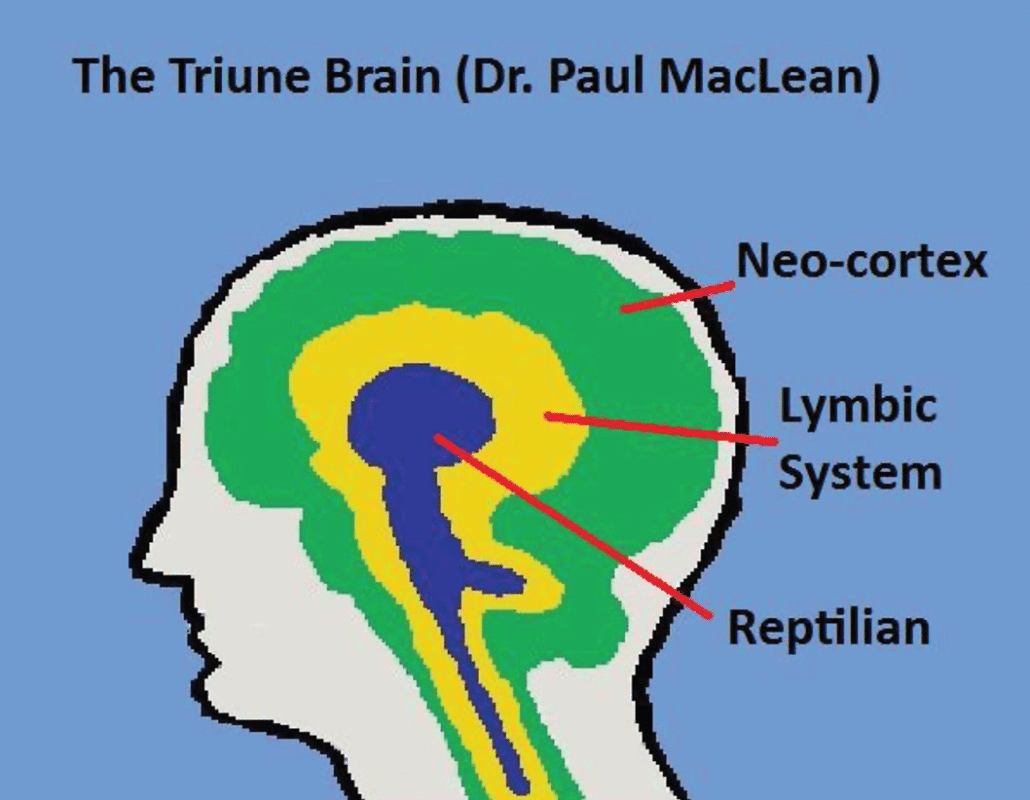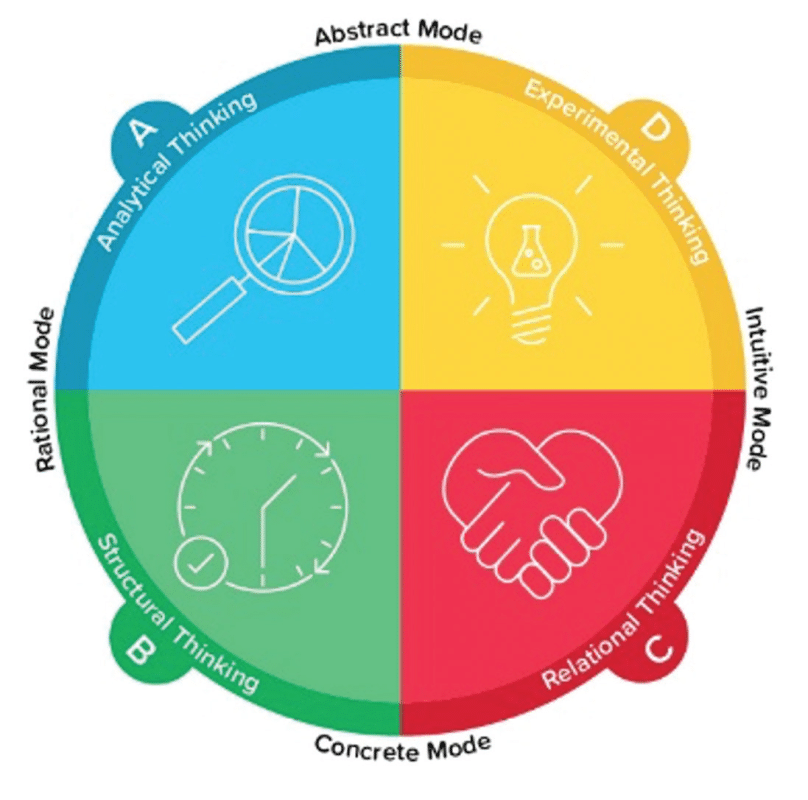No products in the cart.
NZDA News Article, Infection Prevention and Control
THINKing in Dentistry
The power of Whole Brain THINKing in the practice, the team and individuals
A quality managed approach is key in the world of infection prevention, Practice Standards, regulations, compliance, patients, staff, personalities, technical requirements, clinical skill, appointment scheduling, patient and staff communication … the list could go on and on.
A quality managed approach is one that is measured, clearly outlined, well communicated and has strategic vision. Creating and implementing this type of approach requires application of multiple thinking preferences – and is a perfect segue into the world of ‘whole brained thinking’.
The brain is the source of who we are, what we do, how we do it. It likes patterns and processes, and easy to follow ‘instructions’ develop behaviours … left up to individuals = neurological chaos! Applying ‘Whole Brain THINKing’ to everyday activities and business issues understanding and using neurologically preferred thinking preferences. Take some time to stop and THINK.

Having insight into our own preferences, and the consequences of the individual profiles of those around you can give better understanding of how you, and others, prefer to think to improve communication and decision making. Just as awareness of differences in thinking style preferences within your team can build acceptance and understanding. There are no right or wrong thinking preferences.
People are different. Research of hundreds of thousands of people show there are four ‘species’ of people living side-by-side on this planet. Without help they simply don’t understand each other.
Two things are needed for personal and business success: self-knowledge and knowledge of others.
- Self-knowledge is the starting point because it leads to increased self-esteem and self-improvement.
- Knowledge of others is important because it is the key to better communication, trust, working relationships and influencing.
We are all so different – it is imperative to know how to get the best out of people. Treat them the same and you’ll get grey, treat them as they want and you’ll get brilliant colour.
Knowing me, you, us and them.
- A focus on personal development – helps to understand me, understand you.
- A focus on team development – understanding team and maximising performance.
- Leader development – leadership capacity and powerful partnerships.
Busting the myth – we are not just right-brained or left-brained! Our thinking preferences are a mix of nature and nurture and can change over time. Knowing our individual thinking style preferences can give powerful insight.
Having some understanding of our own thinking is the key. Once you have insight into your preferred approach to emotional, analytical, structural and strategic thinking it becomes can be more easily applied across many aspects. Results in better productivity, communication, collaboration, and innovation can be noticeable to self and others. Thinking influences everything we do. Consider it a simple way to decode others.
Clinicians, have to think and perform at microscopic and helicopter view – often simultaneously!
Similarly, (same, same but different) as do Practice Managers, Dental Assistants and Front Office staff.
Take a closer look at your thinking … and contemplate your own thinking preferences. How do you/ can you relate more effectively to those around you?

Mind that blind spot! Identifying thinking preferences and any blind spots can provide a significantly increased level of personal under-standing. Awareness of differences in thinking style preferences within your team can build acceptance and understanding.
Intelligence quotient (IQ) vs emotional quotient (EQ) relevance is often questioned – is it relevant? Some research says high intelligence can often correspond with low self-awareness. And, if a lot of time is spent in cognitive tasks your ability to have empathy with people can be less developed.
We are all so different — is imperative to know how to get the best out of people. Treat them the same and you’ll get grey, treat them as they want and you’ll get brilliant colour.
Herrmann’s Brain Dominance Instrument (HBDI) is based on Nobel- Prize winning research and has been the subject of over 50 Ph.D studies. Ned Herrmann’s brilliance is in bringing together the work of two giants in brain research. These are Roger Sperry and Paul Mc Lean and forming a model based on the four parts of our brain.
Roger Sperry’s Left Brain / Right Brain Split. In 1981 Psychobiologist Roger Sperry received the 1981 Nobel Prize in Physiology or Medicine for his split-brain research. He showed the left side of the brain tends to take in information using the five senses and is concerned with language, words, analysis, and figures. The right side tends to take in information using the sixth sense (intuition) and is concerned with patterns, relationships, art, and music. We all use both sides but some prefer their left brain while others prefer their right brain and this makes us who we are – a discovery that human beings are of “two minds”.
“We are all so different — is imperative to know how to get the best out of people. Treat them the same and you’ll get grey, treat them as they want and you’ll get brilliant colour.”
Paul McLean/s Theory looked at the brain as cross-sections. In terms of depth, there are three layers:

- a lizard’s brain (involuntary body functions such as heart beat and basic reflexes)
- an inner brain (called limbic brain which controls intuition, emotions and feelings)
- an outer brain (called cerebral brain which controls thinking and reasoning).
We all use both inner and outer parts of our brain, some prefer outer brain while others prefer inner brain, again this makes us who we are.
Whole Brain® Model, a metaphor for how people tend to use their brains and how their thinking works related to both home and work situations, therefore representing your total self. Seeing the world through the lens of Whole Brain® Thinking to thrive in a changing world, flex our thinking and see things from perspectives we perhaps wouldn’t have otherwise.
The Whole Brain® Thinking model contains four quadrants — analytical, practical/structural, relational, and innovative/experimental thinking. These quadrants are commonly referred to by colours — Blue, Green, Red, and Yellow, respectively. While we have a stronger preference for one or two quadrants, we can and do access each daily. There is no combination of quadrants that’s better or worse than others.
The Four Dimensions – by drawing these four dimensions Ned Herrmann has created a very useful way of thinking about the human mind, human behaviour and human organisations. Every person and every human organisation can be characterised according to their preference towards each of the four dimensions or segments.
Brain theory is fundamental to understanding human nature, because it explains why we are all so different, and why we often have such fundamental misunderstandings over things which one would expect we should agree about. It’s the reason why we communicate far more easily with some people (similar types) than others. It’s the reason why we tend to partner or marry different types – for completeness. It’s the reason why we can be so clever and so foolish at the same time depending on what we are doing and who we are working with.
Fostering a positive psychology approach, ‘Whole Brain Thinking’ is a preference-based model developed from an understanding of neuroscience. A metaphor for how people tend to use their brains and how their thinking works. It provides a validated positive and inclusive way to identify thinking preferences without pigeonholing or non-productive labelling.
What are thinking preferences? Ned Herrmann’s research shows the four different thinking preferences which he used to create the Whole Brain® Model.
Thinking preferences have an impact on virtually everything we do, including communication, decision making, problem-solving and managing styles. Understanding your thinking preferences will give you a new perspective of yourself and the people you deal with every day. Identifying individual thinking preferences first step.
Our Four Different Selves – you have a team of these four thinking selves available to you, but if you’re like most of us, you probably prefer some of them over others. Like a sports team, you have your go-to players that you send out the majority of the time, while others sit on the bench. As we know, we are often drawn to ‘like-minded’ people – “others like me”.
Recognise and embrace diverse thinking of your team. Align and utilise full range of team’s thinking preferences and differences. When everyone is thinking alike, there’s not a whole lot of thinking going on! A heterogeneous group can be challenging because of its diversity – appreciation of differences and collaboration are key to success!
Why is it that some people get your point straight away while others never seem to understand you?
Have you ever wondered why some team members work well together and others don’t? Because we all think differently. Identifying thinking preferences and blind spots can provide a significantly increased level of personal understanding.
Cognitive diversity is the latent source of our ability to succeed as a team and find meaningful roles for everyone involved. Cognitive diversity for better management – let thinking be your competitive advantage. Let thinking be your competitive advantage. Embrace the diverse thinking of your team – align and utilise the full range of your team’s thinking preferences and differences.
In clinical practice, the morning huddle and team meetings are absolutely essential to an efficient and functional day – resulting in increased productivity and driving good profitability. All essential for a happy, functioning, compliant and viable business.
The four different communication styles: how to communicate more effectively at work
As the song lyrics go … “you can listen as well as you hear” – the real question is, do we?
Successful communication = when listener expectations are met, and what the listener appreciates.
Listener expectations – do you recognise yourself, and/or others in your practice from the following thinking preference communication checklists:

- ANALYTICAL THINKING. Technical accuracy, materials that are direct and to the point, including data and fact based charts. When the information is brief, clear and precise. Ideas that are well articulated and presented in a logical format. Presentations in alignment with the practice/service/business goals and objectives.
Effort to spend time wisely, a good debate and critical analysis is appreciated. - EXPERIMENTAL THINKING. Use of visual aids, ideas in ‘chunks’, with an overview. When there is freedom to explore. Use of long term objectives, and use of metaphorical examples to present a conceptual framework. Frequent, spontaneous tasks and a general connection to the ‘big picture’.
Minimal details, fresh and ‘fun’ approach, use of initiative and imagination is appreciated. - RELATIONAL THINKING. When all involved have equal consideration, include references to the people involved, and to have feelings respected. Knowing how others will/may react. Personal touch, eye contact and a level of informality involvement with others. Use of empathy and consideration of other’s needs. A good attitude and personal relationship.
A harmonious approach, personal touches, sensitivity to feelings including group discussion and achieving consensus is appreciated. - STRUCTURAL THINKING. Step by step unfolding of the topic, and an explanation of how it will happen. Written schedule and action plan. References and background information including thorough, timely and reliable follow through. Alignment with well established procedures, and an assurance that this has been done before. Consistency is king!
A scheduled appointment, with written communication (agenda, task list, meeting outline) provided before session to give proof the prep/’homework’ has been thorough, and a low risk is appreciated.
Why you cannot ignore colour (of your brain) – because it is the mental path to self-development!
Improve your decision making approach:
WHAT – what is the decision, and what are the facts?
WHY – why are you making this decision? Why is it important?
WHO – Who is involved in this decision. Who will it impact on?
HOW – How are you going to make the decision? How are you going to manage any risks involved?
Why you cannot ignore colour (of your brain) – because it is the mental path to self-development!
Growth starts out of our comfort zone. Situationally step into modes of less preference as required
Awareness leads to understanding & acceptance, in turn beginning a value shift, resulting in a belief and application – final resulting in a transformation.
THINKing and THRIVing – easily go hand in hand. ‘The Great Reshuffle’ – reconsidering who you work with. Working with people you may not have initially gravitated towards. We are instinctively likely to collaborate with those who think similarly to us, however only sometimes is this advantageous.
Stretch your band’ – develop greater comfort in a quadrant. Awareness of mental stretch helps understand why certain tasks can feel fatiguing or draining and also helps identify when to get help or collaborate.
Adopting an agile and resilient mindset can be easier said than done. But, as with all things in life, growth comes with practice. Find ways to practice, and ‘step into’ the thinking style/s of one of your less-dominant quadrants, you can feel a ‘mental stretch’. Remember the brain has no cooling ability, and ‘overheats’ at approximately 20 minutes … so less preference thinking tasks should be done in ‘bite size’ pieces.

What could I do to develop greater comfort in a quadrant? You can find ways to practice shifting to another quadrant while you’re engaged in a challenging activity at work, or at home. By ‘stepping into’ the thinking style of one of your less-dominant quadrants, and feeling the ‘mental stretch’. Caution, it may show up as frustration, angst and feel uncomfortable initially.
It’s best to engage in the activity at the time of day where you have the most energy, even though in most cases people do the opposite – we often leave the most challenging tasks for when we have the least energy! You need that extra mental energy to both get that mental stretch and retain the learnings you may encounter when you do it.
Examples of how you can get a ‘mental stretch’:
- Struggle with spreadsheets and handling data? (low preference A quadrant)
Practice calculations, new formulas and take more initiative in this area. - Love social events at work (and are low in B quadrant)
Engage in planning and coordinating an event and take care of details and decisions. - Love golf (but have low preference in C quadrant)
Use the social aspects of golf to pay attention to get to know playing partners on the course. - If you love collecting (and are low in D quadrant)
Find new ways of collecting , being creative, visual display information.
By understanding your own preferences, you also have an ability to understand others and how you could better influence, sell to and lead teams – the possibilities really are endless.
It’s best to engage in the activity at the time of day where you have the most energy, even though in most cases people do the opposite – we often leave the most challenging tasks for when we have the least energy!
The basis for Whole Brain Thinking is a preference based model developed from neuroscience understanding. Using a positive psychology approach, it is a validated and inclusive way to identify thinking preferences – not pigeonholes or unproductive and unhelpful labelling.
Reviewing our own, and considering others thinking preferences gives scalable framework, and a lens for improved understanding and insight. It is a positive acknowledgement of differences; that different tasks require different mental processes, and different people prefer different kinds of thinking.
Better results through better thinking – it is possible to achieve better results when we strategically leverage the full spectrum of thinking available.
The benefits to be realised are many;
- Performance improvements, effectiveness, increased sales, cost savings, reduced attrition.
- More efficiency, time saving and improved processes as people work together better.
- Improved relationships, coaching, teamwork and better training.
- More creativity, more options, and new ways of working that result from understanding each other’s strengths.
So, how do you think? …
Leaders are learners. People don’t begin as experts, after all. As we journey we gain experience, invest in ourselves, and apply what we learn. However, unlocking this growth can be easier said than done. Using a few ‘mind hacks’ can help to grown beyond what you know and can be a helpful way to overcome obstacles, gain perspective, and acquire knowledge.
Mind hacking (also known as metacognition), is essentially the act of people thinking about thinking, and describes how people strive to improve their thinking, intellect, and personal development.
The idea of a growth mindset comes from the psychologist Carol Dweck, who posits that people can take two approaches to life:
1. That your intelligence and personality are fixed and predetermined, or
2. That they can be developed through effort.
You can’t learn from your mistakes if your intelligence and personality are fixed. But with a growth mindset, mistakes become an opportunity. As Dweck writes, “In this mindset, the hand you’re dealt is just the starting point for development.” Develop new habits, and break through mental barriers that hinder personal growth.
How to Combine Whole Brain® Thinking and Mind Hacks.
Our thinking preferences influence how we approach problems and how we prefer to direct our attention and energy when confronted with new information. Incorporate mind-hacking techniques that align with each quadrant to create a well-rounded approach to personal growth. For example, as you and your team evaluate potential brain-hacking techniques and learning activities, ask questions such as these:
- What are our objectives — own learning, team learning, the business?
How will we measure success? - What guidelines do we need to have in place when it comes to mind hacks?
How do we fit this into our schedules? - How well does a particular mind hack respond to a person’s needs?
How can we help each other with best path to thinking and learning preferences? - What’s our overall vision for learning?
How can we challenge ourselves to rethink our thinking through mind hacks?
Also practice some Self-Reflection – learn something every day. Find a quiet space, tune off electronic devices, and ask yourself:
- How successful was I at getting things done? (Blue)
- How did my interactions with other people fare? (Red)
- Did I hit a wall in coming up with ideas or thinking through problems? (Yellow)
- How can I plan differently for tomorrow? (Green)
In 10 minutes, you will have set the stage for more learning and better results tomorrow.
Continuously explore new mind-hacking techniques and adapt your approach based on what works best for you and your goals. Seeking out the new and novel is critical, as humans default to habits and familiarity. The good news is that there are countless ways you can inject some novelty into your routines that touch on every quadrant of Whole Brain® Thinking.
For example:
- Instead of scrolling through phone first thing, schedule a few minutes of meditation or take a brisk walk.
- Change your workspace — new decor, different lighting, rearrange furniture or objects.
- Visit nearby places typically off your radar that bring you in contact with new people.
- Seek out new websites, books, and articles that provide fresh concepts or challenge your points of view.
- Mix up your “go-to” problem-solving methods.
We are all leaders in one way or another, and can set the example by embracing a growth mindset, seeking new perspectives, and trying neuroscience-backed mind hacks to grow cognitively.
Showing your team that you’re committed to learning and growth makes it easier for them to do the same.

—
This article originally appeared in Volume 218, May 2024 of NZDA News.



 Coaching Solutions
Coaching Solutions













